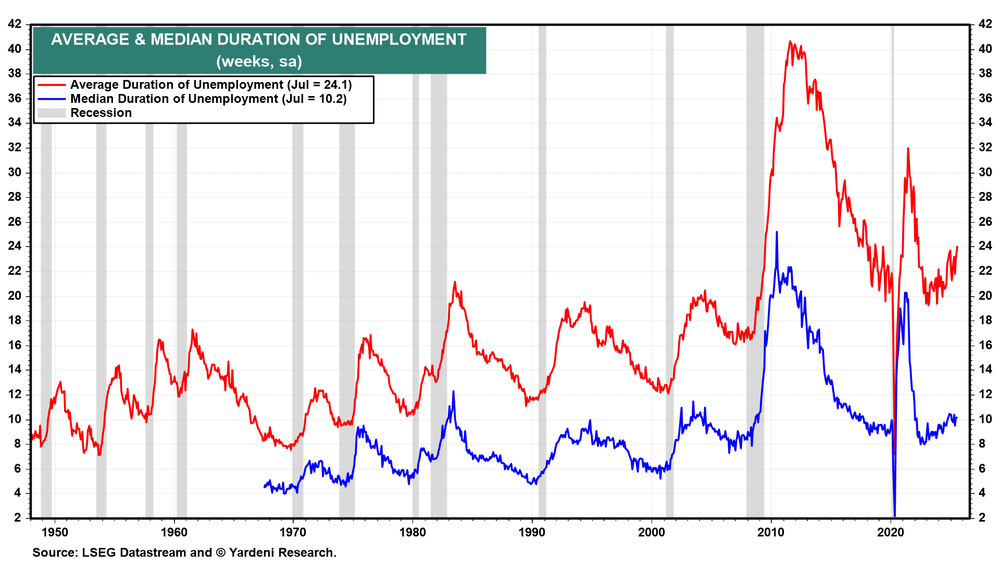President Donald Trump last week nominated Council of Economic Advisers Chairman Stephen Miran to serve out the remaining term of Federal Reserve Governor Adriana Kugler. Trump said Miran will serve in the role until January 31, 2026, while he continues a search for a permanent replacement. The Senate will probably confirm his nomination quickly and before the September meeting of the FOMC.
If so, then there could be at least three dissenters on the FOMC if the committee votes to pass on a cut in the federal funds rate (FFR) in September. They will argue that a weakening labor market justifies a . There might be a new group of dissenters if the Fed cuts the FFR. They might object that a rate cut risks heating inflation.
The current big debate is whether the weakness in the reflects a labor market in which the demand for labor is weakening or whether there is a shortage of workers. It may be both at the same time.
On the demand side, Trump’s Tariff Turmoil (TTT) since April may have caused many employers to postpone their hiring plans until they were more certain of the impact of TTT on their businesses. If so, there should be less uncertainty about this now, and their hiring should resume. In this case, the Fed should hold off on cutting the FFR, and the dissenters will disagree.
In our opinion, the problem is mainly on the supply side of the labor market (chart). The labor force has stopped growing so far this year as a result of the Trump administration’s very effective closing of the border, as well as ongoing deportations. In this case, the Fed should also hold off on cutting the FFR since that would boost demand for workers, exacerbating the shortage of labor, which would put upward pressure on wage and price rates.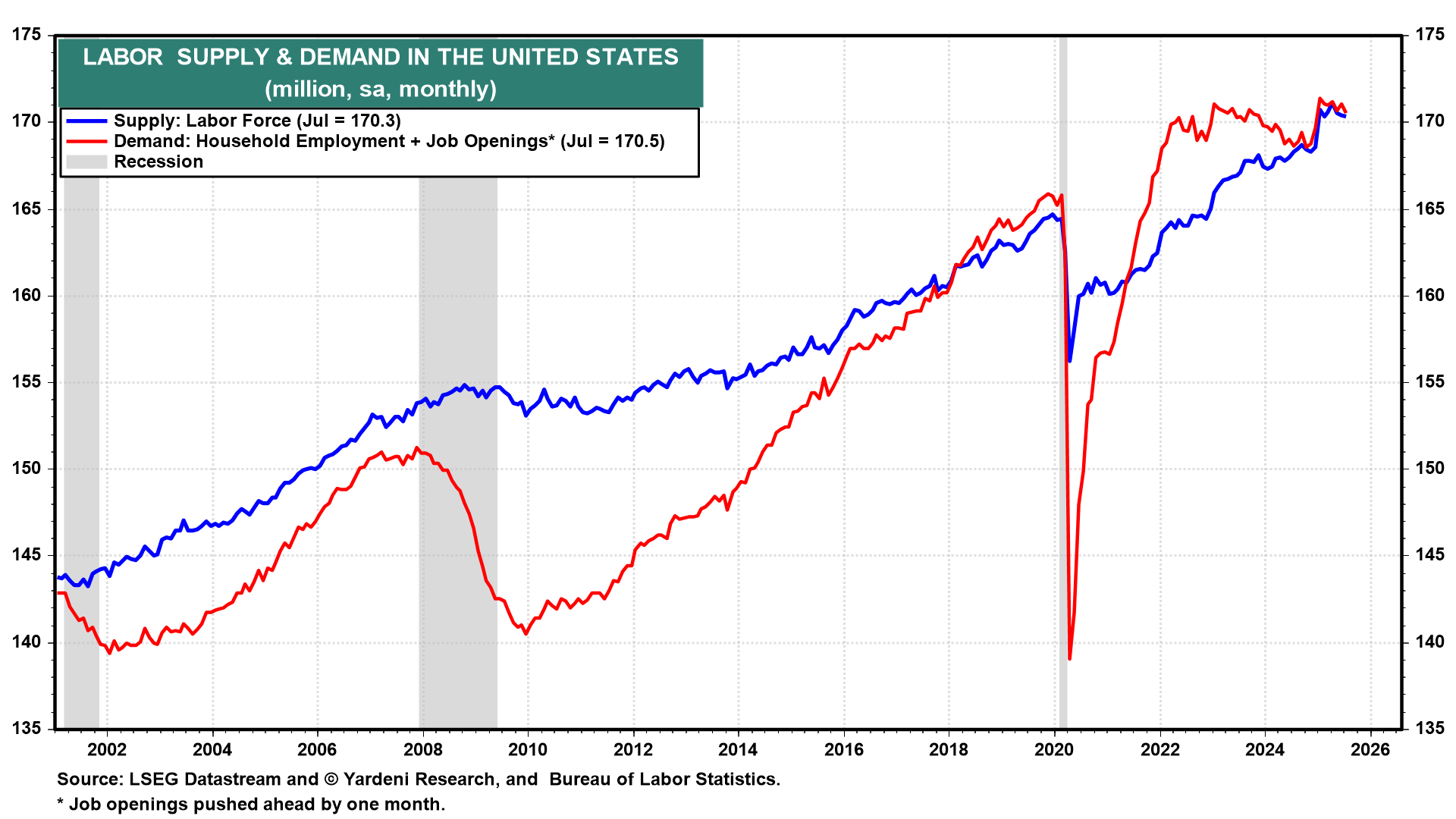
Of course, the case for easing Fed policy improved following the weak July payroll report that included significant downward revisions to the gains during May and June. In addition, the duration of has been steadily increasing this year. It has been getting harder for the unemployed to find jobs.
The unemployment claims report showed that layoffs remain low, as evidenced by (chart). They remain in a low range consistent with a robust labor market. However, have been rising this year, confirming that the unemployed are staying unemployed for longer.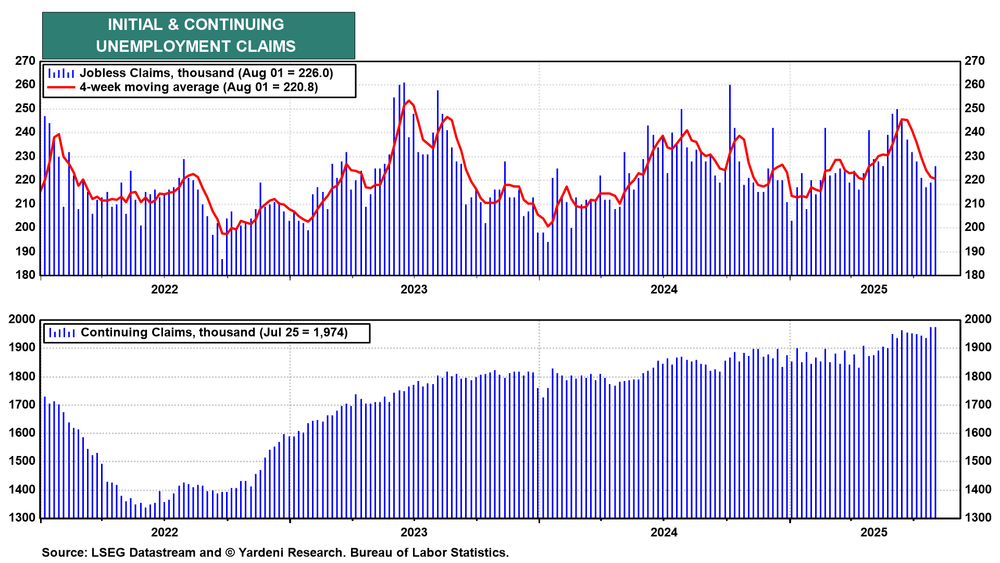
Keep in mind that unemployment benefits last only 26 weeks. The Bureau of Labor Statistics (BLS) compiles monthly data on the duration of unemployment. July’s data showed that 1.83 million of the unemployed had been jobless for 27 weeks or more. Continuing claims rose to 1.97 million during the week of July 25 (chart).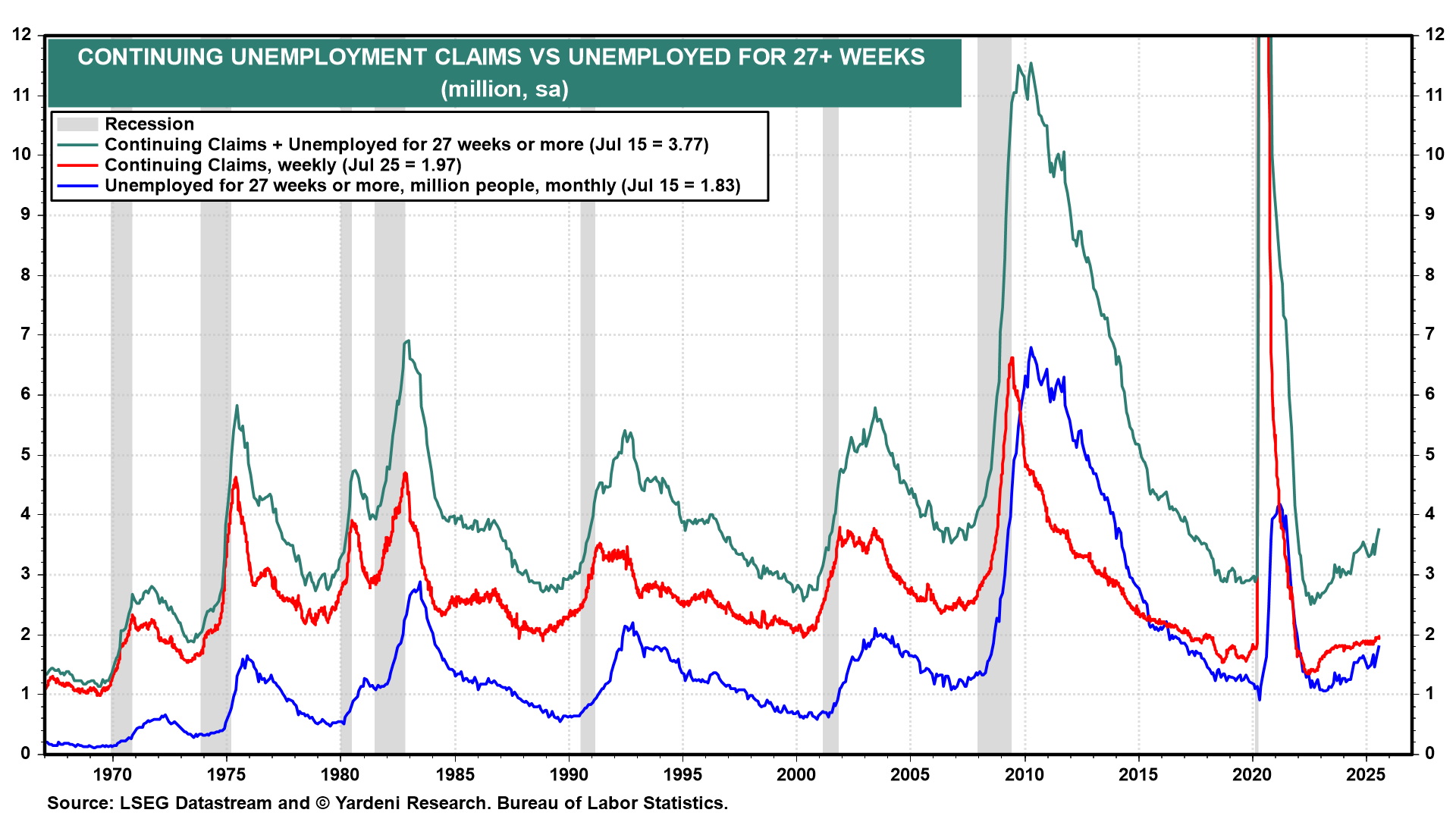
The monthly BLS data show that the number of unemployed workers has increased this year as the duration of unemployment has increased (chart). Layoffs have remained low, as evidenced by the steady number of those unemployed for less than five weeks.
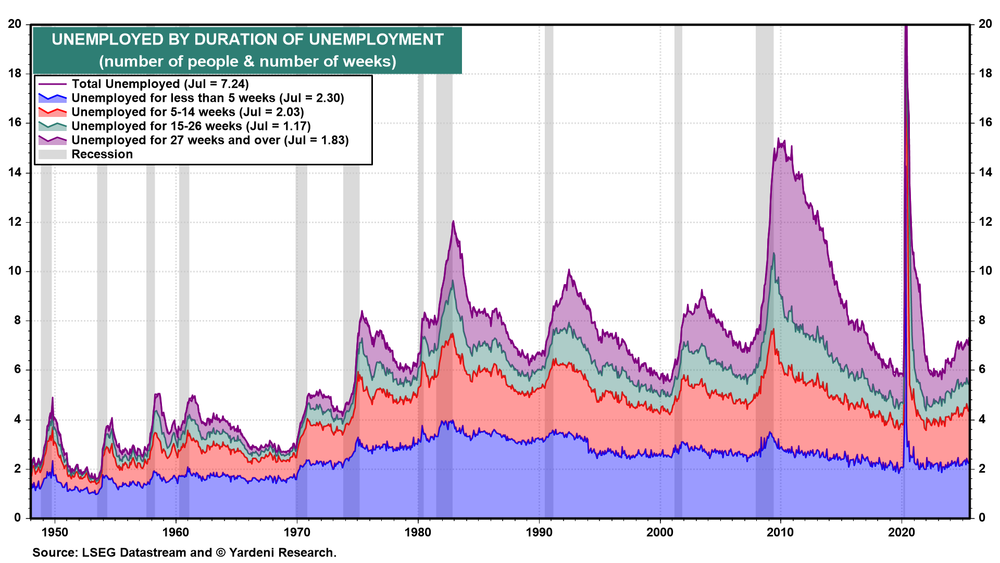
The average duration of unemployment has risen over the past three years to 24.1 weeks (chart). The FOMC would undoubtedly vote to ease in September to reduce the duration of unemployment.
However, much will depend on the inflation reports for July and August, which will be released before the September 16-17 FOMC meeting. We expect they will run hot as a result of tariffs. We also expect that August’s payroll employment report, released in early September, will show that payroll employment continued to improve, as it did in July, because TTT has abated.
If so, the FOMC likely will vote to hold off on cutting the FFR yet again. This time, there would be at least three dissenters, up from two at the last meeting.